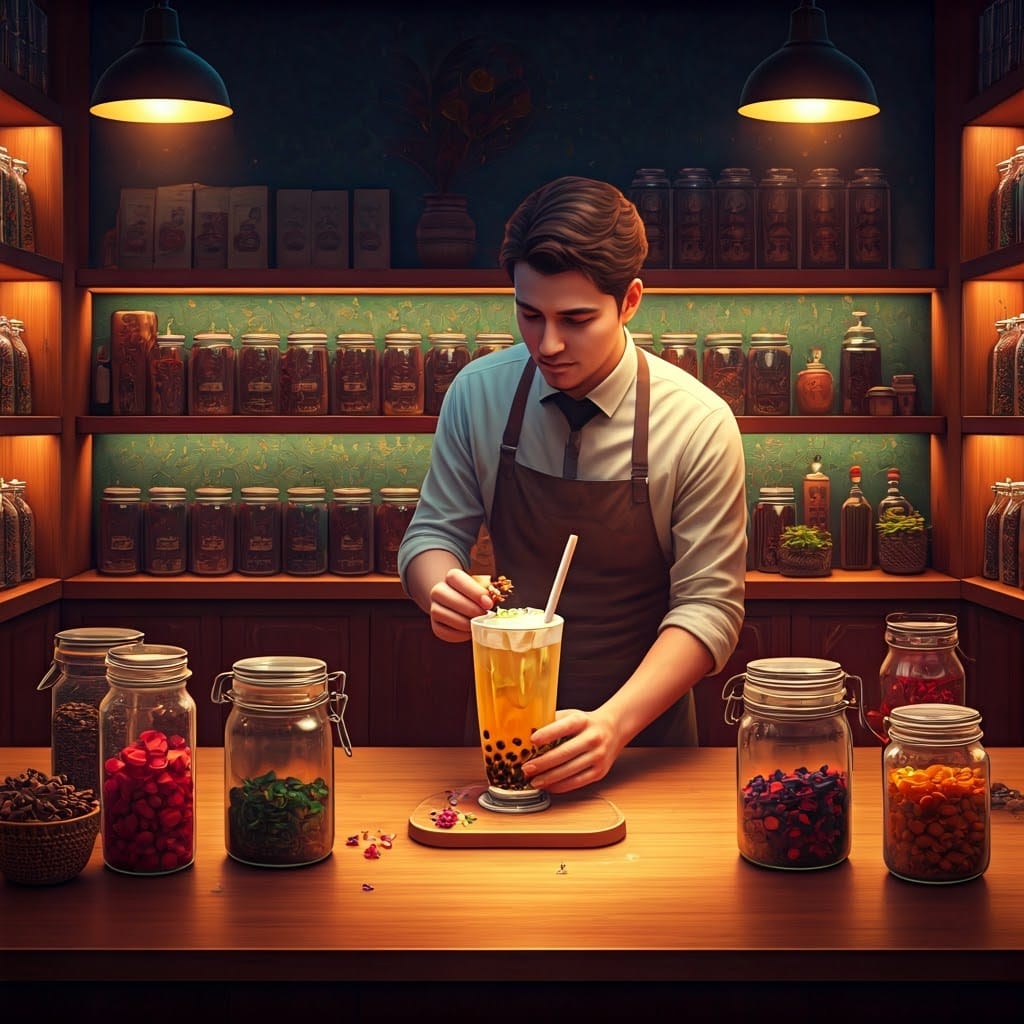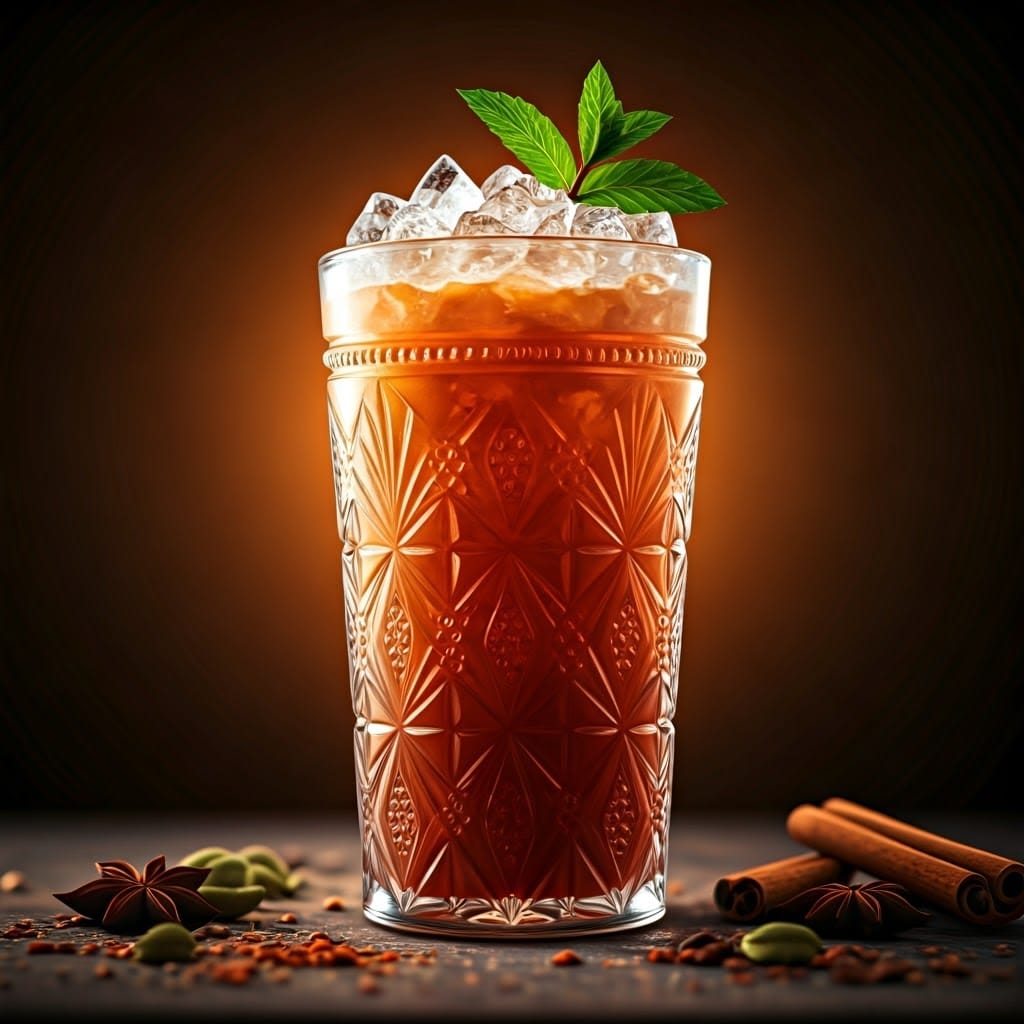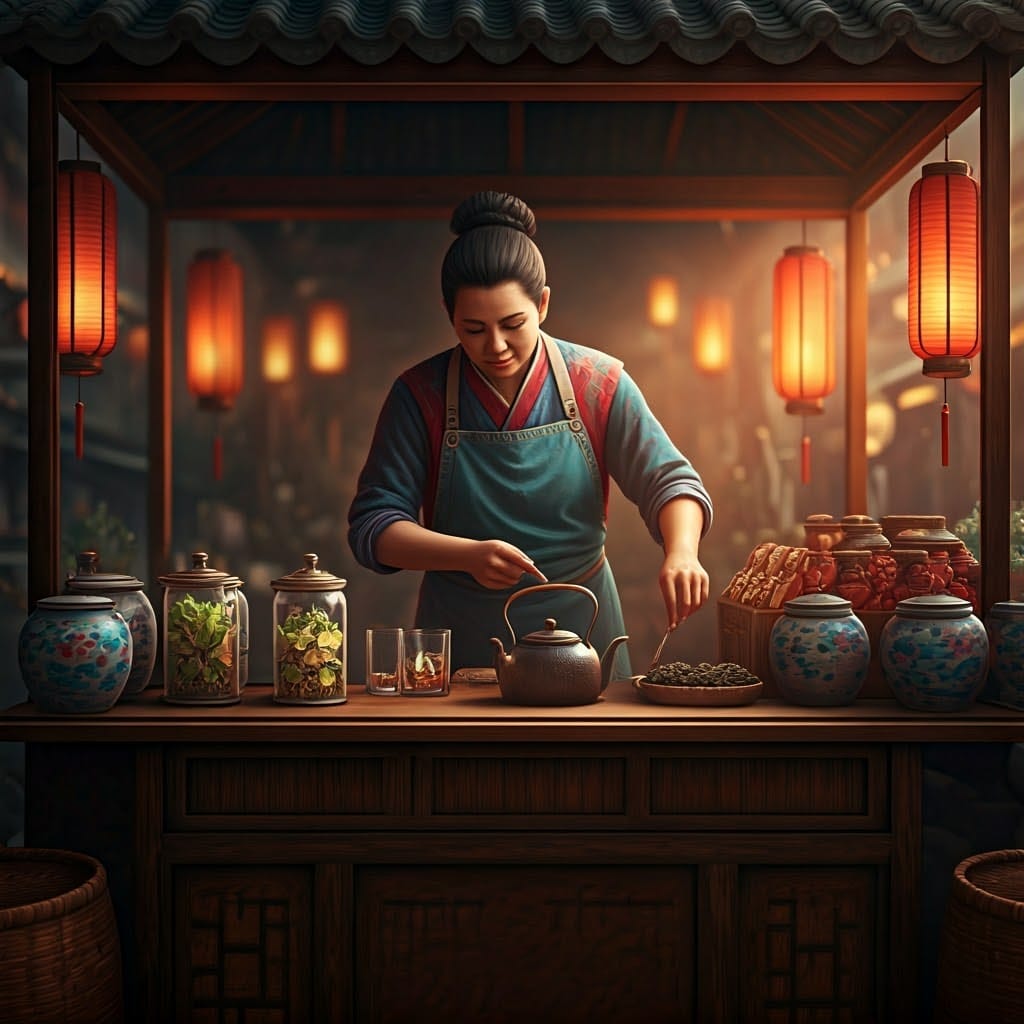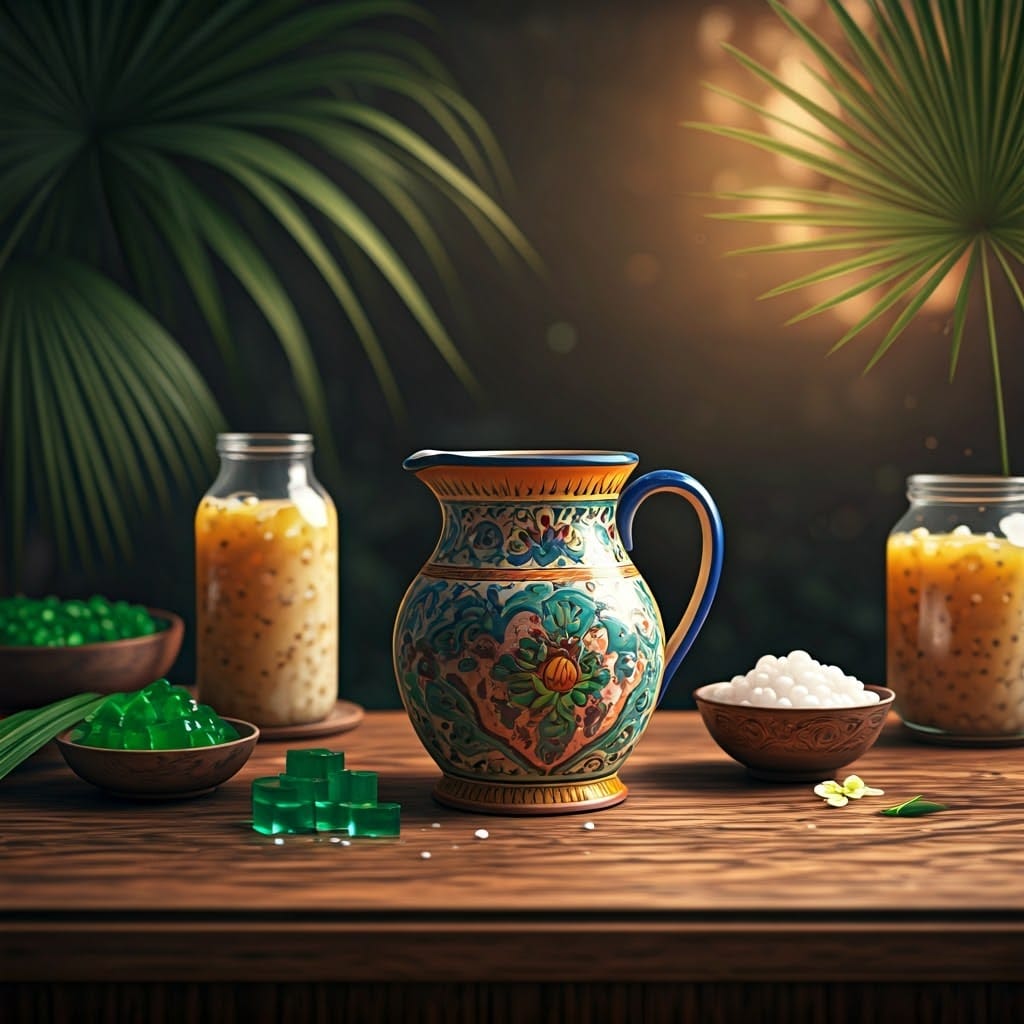Across Asia, tea has always been more than just a drink—it’s a way of life. The continent’s love for tea is as diverse as its cultures, with every country putting its own spin on this ancient beverage. Among these innovations, Asian iced teas stand out for their creativity, vibrant flavors, and cultural significance. From the chewy pearls of bubble tea to the spiced delight of Thai iced tea, these refreshing drinks have become global sensations. Let’s dive into this cool world and explore the history, preparation techniques, and cultural importance of these delightful beverages.

The Rise of Bubble Tea: A Taiwanese Treasure
Modern bubble tea innovations include popping boba (fruit juice-filled spheres) and toppings like cheese foam—a salty-sweet addition that creates a velvety layer atop the tea. Bubble tea shops have become hubs of social interaction, embodying the concept of cha no ma (a tea space), where friends gather and relax. Its Instagrammable aesthetic has also helped its global appeal, with the signature pearls and colorful hues dominating social media feeds.
The Rise of Bubble Tea: A Taiwanese Treasure
The journey of bubble tea’s invention is intricately linked to two pioneering tea shops in Taiwan: Chang Fan Shu’s Chun Shui Tang and Tu Tsong He’s Hanlin Tea House, both of which contributed significantly to the drink’s development and global recognition.
Chun Shui Tang and the Bubble Tea Origin
Chang Fan Shu founded Chun Shui Tang in Taichung, Taiwan, with the intention of innovating traditional tea culture. Inspired by a visit to Japan, where he observed cold beverages gaining popularity, he introduced chilled tea to his menu—a departure from Taiwan’s predominantly hot tea traditions. In 1988, during a staff meeting, Lin Hsiu Hui, an employee at the shop, added fen yuan, a type of tapioca dessert, to her cold tea. The unique texture and refreshing combination quickly caught on and became a signature item, solidifying Chun Shui Tang as one of the leading contenders for the creation of bubble tea.

Hanlin Tea House’s Contribution
Meanwhile, in Tainan, Tu Tsong He established the Hanlin Tea House in 1986, bringing his own flair to tea innovations. Drawing inspiration from his childhood memories of translucent tapioca balls known as fen yuan, he decided to blend these chewy pearls with green tea, naming the creation zhen zhu lu cha or “pearl green tea.” To enhance the experience, he experimented with brown sugar tapioca balls, which later became synonymous with the drink. Recognizing the need for practicality, Tu also worked with manufacturers to develop wider straws specifically for consuming the tapioca pearls, making the drink more accessible and convenient.
The Battle for Bubble Tea’s Origins
While both tea houses laid claim to the invention of bubble tea, their rivalry culminated in a legal battle that ended in 2019. The court ruled that bubble tea was a general food item and not eligible for exclusive rights. This decision underscored how both Chun Shui Tang and Hanlin Tea House contributed uniquely to the development and popularization of the drink, rather than attributing its creation to a single inventor.
Bubble Tea’s Rise to Global Fame
The work of both tea houses not only revolutionized tea culture in Taiwan but also sparked a beverage trend that resonated worldwide. Their innovations reflect the creative spirit of Taiwanese street food culture and showcase how traditional ingredients can inspire new culinary phenomena. From local night markets to global chains, bubble tea has become a cultural and economic icon for Taiwan, bridging its heritage with modern tastes.
Milk Tea: Creamy Comfort in a Cup
Milk tea is a cousin to bubble tea but simpler and equally satisfying. Across Asia, milk tea takes many forms. Hong Kong-style milk tea, often called pantyhose tea for the fine mesh used to strain it, offers a robust black tea flavor balanced with evaporated or condensed milk. In Thailand, Thai milk tea is a bright orange treat, thanks to the addition of spices like star anise and tamarind.
Milk tea preparation emphasizes balance. The tea base must be strong enough to hold its own against the creamy milk and sugar, creating a velvety texture that isn’t overly rich. While traditionally served hot, milk tea has become a favorite iced option, perfect for sweltering tropical climates.
Pairing milk tea with snacks like buttered toast or custard buns enhances the experience, making it a comforting choice for tea lovers worldwide.
Traditional Iced Teas Across Asia
Each country in Asia has its own take on iced tea, often blending local ingredients and cultural preferences. Here are some iconic examples:

- Thai Iced Tea: This vibrant, spiced drink is made with strong black tea, sugar, condensed milk, and aromatic spices. It’s poured over ice for a refreshingly sweet and creamy experience.
- Japanese Iced Green Tea: Known for its simplicity, this tea uses cold-brewed Sencha or Matcha, offering a clean, grassy flavor. It’s a staple for those seeking a low-calorie, antioxidant-rich beverage.
- Vietnamese Iced Tea (Trà Đá): Often served as a free refreshment in local eateries, Trà Đá is made from robust black tea, sweetened and chilled to beat the heat. For a richer option, sweetened condensed milk is added.
- Filipino Sago’t Gulaman: Combining black tea, tapioca pearls, and jelly cubes, this dessert-like drink is a staple during fiestas and hot afternoons.
- Korean Yujacha (Honey Citron Tea): This tangy and slightly sweet tea is made from preserved yuzu fruit, honey, and hot water, then chilled. It’s not just delicious but also considered a remedy for colds.
The Art of Preparation: Secrets to the Perfect Brew
Making iced tea might seem simple, but achieving perfection requires attention to detail. The choice of tea base—whether black, green, or oolong—lays the foundation for flavor. While hot brewing is quicker, cold brewing extracts a smoother, less bitter profile, making it ideal for delicate teas like green tea or oolong.

Sweeteners and flavor enhancers vary by culture. In Thailand, spices like cardamom and tamarind are common, while Vietnam leans on condensed milk for its unique taste. Texture is another hallmark of Asian iced teas. Tapioca pearls, grass jelly, and basil seeds add chewiness and fun to every sip.
Presentation is key. Traditional teas are served in simple glassware, while modern bubble teas come in tall, plastic cups with wide straws—perfect for slurping up toppings. Ice is often crushed for a better blend of tea and flavorings.
The Cultural Significance of Iced Tea in Asia
Iced tea is more than a refreshing drink; it’s woven into the social and cultural fabric of many Asian countries. In bustling cities like Bangkok and Hanoi, iced tea vendors are a staple on street corners, offering affordable hydration and a moment of rest. Tea houses across Asia serve as quiet retreats, preserving centuries-old traditions while adapting to modern tastes.

During festivals, iced tea often takes center stage. For instance, in the Philippines, sago’t gulaman is a fiesta favorite, symbolizing abundance and joy. Meanwhile, Korea’s honey citron tea doubles as a home remedy, reflecting the health-conscious aspect of tea culture.
Global Influence of Asian Iced Teas
Asian iced teas have taken the world by storm. Bubble tea leads the charge, with shops popping up in cities from New York to Paris. The drink’s customizable nature—flavors, toppings, and sweetness levels—caters to diverse tastes, ensuring its widespread popularity.
Fusion flavors like matcha latte or taro smoothies blend Asian traditions with Western preferences. Social media has been a game-changer, with food bloggers and influencers showcasing their creative takes on classic recipes. Iconic Asian brands, such as Gong Cha and Chatime, have successfully expanded globally, bringing authentic flavors to new audiences.
Conclusion
Asian iced teas are a testament to the continent’s culinary creativity and cultural richness. Whether you’re savoring a classic bubble tea, indulging in a creamy milk tea, or exploring traditional recipes like Thai iced tea, each sip offers a taste of heritage and innovation. So, why not try making your own at home? Share your experiments or favorite tea recipes with us—we’d love to hear from you! Whatever your choice, Asian iced teas promise to cool you down and spice up your day.
